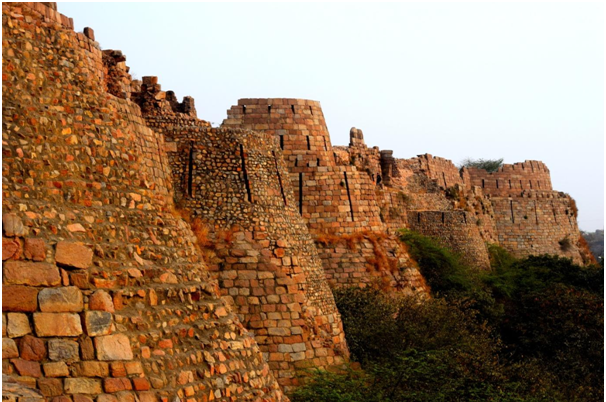Heritage: Tughlaqabad Is Now For Cattle, Not Tourists

NEW DELHI: Constructed in the 14th century, Delhi’s Tughlaqabad Fort is a tribute in stone to a dynasty’s profuse legacy. On rocky terrain, the fort stretches across nearly 7km on the Qutab-Badarpur road. Initially built by Ghiyas-ud-Din Tughlaq, the father of the dynasty, the fort was completed between 1321 to 1327.
But the grand old fort is in ruins. Supposedly a protected monument, it has been completely neglected by the Archaeological Survey of India.
“The truck trailers drop containers right next to the fort which is a clear violation of ASI guidelines. The guidelines state that nothing can come up within a 100 metres radius of a protected monument and up to 300 metres is controlled area," says Prof A G K Menon, a conservationist architect and director, TVB School of Habitat Studies.
The truck trailers run on diesel engines which emit more pollution as their high payloads cause motors to strain. The weight of the containers can be as much as 40 tonnes and with little maintenance, the engines give way. This pollution is adding to the deterioration of the Tughlaqabad Fort.
Cows,buffaloes and mules graze in the premises with the walls fast eroding under official neglect.
Some local people who were there inside the fort said to The Citizen, that there are few ditches at specific places where children playing or even tourists fall.
Some stairs to underground tunnel areas have become risky.
Archaeological Survey of India by the time of Phase-1 (2007-08) , there was provision in proposal about up-gradation of tourist amenities and facilities at par with international standards. 30 Lacs were required and those funds were taken from corporate brands. The initiative was taken, process started but didn’t continue for long. Hence, today we can’t even find drinking water inside the fort that lacks all amenities for even the casual visitor, let alone tourists.
ASI is not even sprucing up of the monument by way of improving the pathways, repairs and painting to the railings/ boundary wall, upgradation of toilets, drinking water, publication counters, signage, etc.
The pool in the in backside area of the fort is also polluted, leaving no option for a person over there to access water being inside the fort.
(Photographs by Mithil Kumar)



